The Karma of Broken Trailers

Today we are proud to share an excerpt from Chris Santella’s new book, “The Tug Is The Drug.” You may know Chris as the author of “Fifty Places To Fly Fish Before You Die.” His new book is a collection of thirty essays. We know you will enjoy this one!
THE KARMA OF BROKEN TRAILERS BY CHRIS SANTELLA
Every generation or so, the subject of paving the Deschutes River access road from Sherars Falls to Mack’s Canyon is brought up for discussion. The notion is always quickly shot down, with the guide community leading the charge. “The crowds will be unbearable on an already crowded river,” is the sentiment. Prospects for a paved road are tabled for another 10 or 20 years, and some of its opponents proceed to drive the roughly 17-mile stretch at twice the posted speed limit—especially during the steelhead season—leaving the already marginal gravel road a washboard hell.
One that can be very hard on trailers.
I own a one-third share of a drift boat, and consequently am sometimes asked to donate a trip for a school auction or assist friends with overflow guests. One weekend last September, I was slated for two such trips, back-to-back, both floating from the Beavertail campground to Mack’s. Prior to the adventure, I had my tires rotated and checked, knowing the travails that waited. I picked up the boat from my friend’s driveway and proceeded to Maupin.
At 4:30 the next morning, my friend (and his sturdy Tacoma Supercab) began the drive north to Beavertail. When we left the paved road at Sherars, my Subaru was engulfed in his dust; but soon his taillights were out of sight. That’s because I drive very slow on the access road, hoping to get my rig down and back in one piece. There was a blush of pink above the rimrock as I descended from the road to Beavertail. Reaching the bottom, I could see my friends at the put-in, wadered up and waiting. I circled the campground and rounded the final bend to approach the put-in. As my wheels straightened, there was an abrupt thud. I stopped, expecting I’d hung up on a rogue rock or popped one of my recently rotated tires. My eyes drifted to my passenger-side mirror. There, I spied one of my trailer tires rolling toward some brush.
Fixing Line Twist: Video

A day floating the river can turn into frustration when your running line starts to tangle.
There are lots of reasons fly lines get twisted. The most common is being rolled under foot in the bottom of the boat. However it happens, it’s a mess of tangles and knots that make fishing frustrating. There’s nothing worse than landing your fly just short of the strike zone because your running line is tangled.
Fortunately there is a simple trick to fix line twist. I learned this trick from my buddy Zack Dalton of ROI Products and it changed my life. I promise you will love it.
WATCH THE VIDEO AND NEVER SUFFER WITH A TWISTED LINE AGAIN.
Read More »Flynn’s Stonefly Nymph: Video
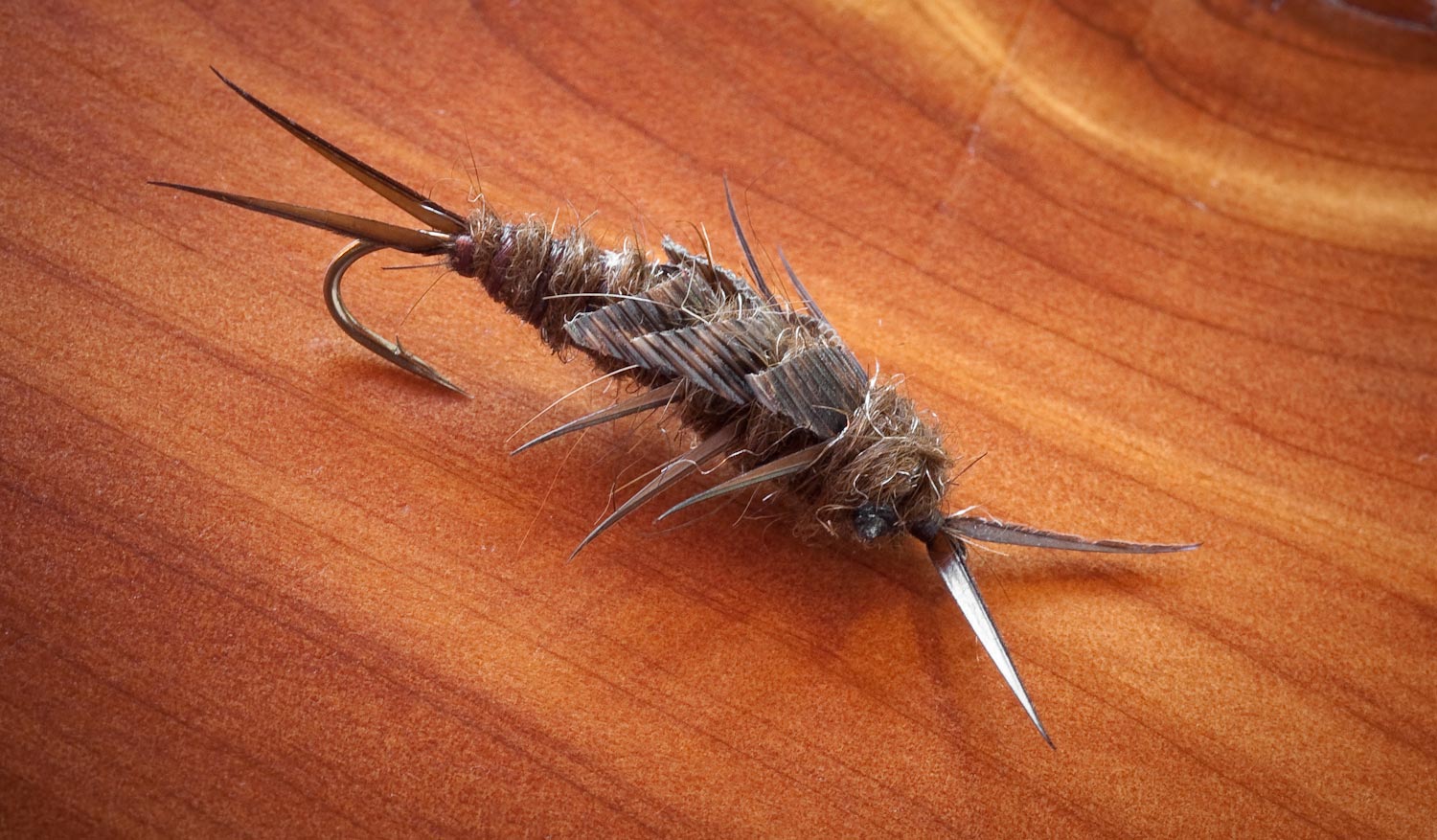
I HAVE SAID ON MANY OCCASIONS THAT, I DON’T CARE TO LIVE IN A WORLD WHERE TROUT DON’T EAT STONEFLIES.
My good friend Dan Flynn shares my obsession with the noblest of insects. Dan is a great tyer with an impressive repertoire of classic patterns. I have always admired his meticulous stonefly nymphs. I’ve also spent many days watching him crush trout on them.
C&R Tips & Gear for Musky & Other Toothy Critters
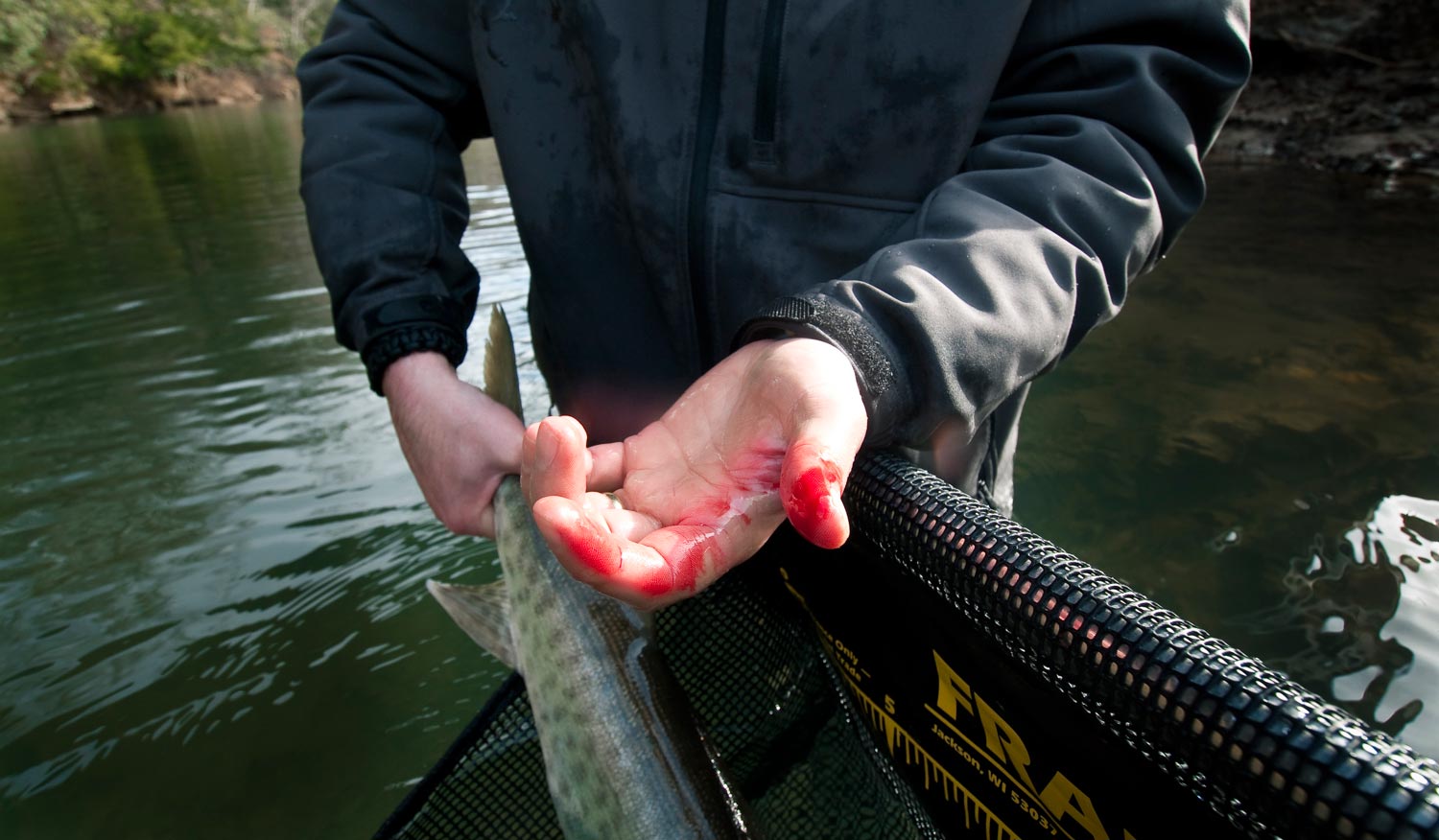
I’ll never forget the first musky I landed on fly.
It was an extremely proud moment for me, but it quickly turned into a stressful situation after I got the musky to the boat. I had serious problems removing the deeply hooked fly. The musky had its mouth slammed shut and would not open it more than a couple seconds at a time. After a few minutes without making any progress, I became desperate, and used my hand to pry the mouth open (dumb I know, but the health of the fish was more important to me) and I ended up badly cutting my hand on the razor sharp teeth. The entire hook removal process took far too long, and that made it extremely difficult for us to revive and release the fish. It was an organized team effort to say the least. I held the fish in the water, Louis stabilized the net, and Murphy ran the trolling motor upstream to keep water running over the gills until we got the musky green again. Talk about a bummer that ended up overshadowing a proud angling moment. That’s not how I wanted my first catch and release of a musky to go down.
If you’re planning on going fly fishing for musky or any other toothy critters for the first time, I highly encourage you to read over these organized catch and release handling tips and gear recommendations. They’ll keep you and the fish safe, and you’ll greatly decrease the chances of ruining a great moment on the water like I did.
Read More »Don’t get ripped off!
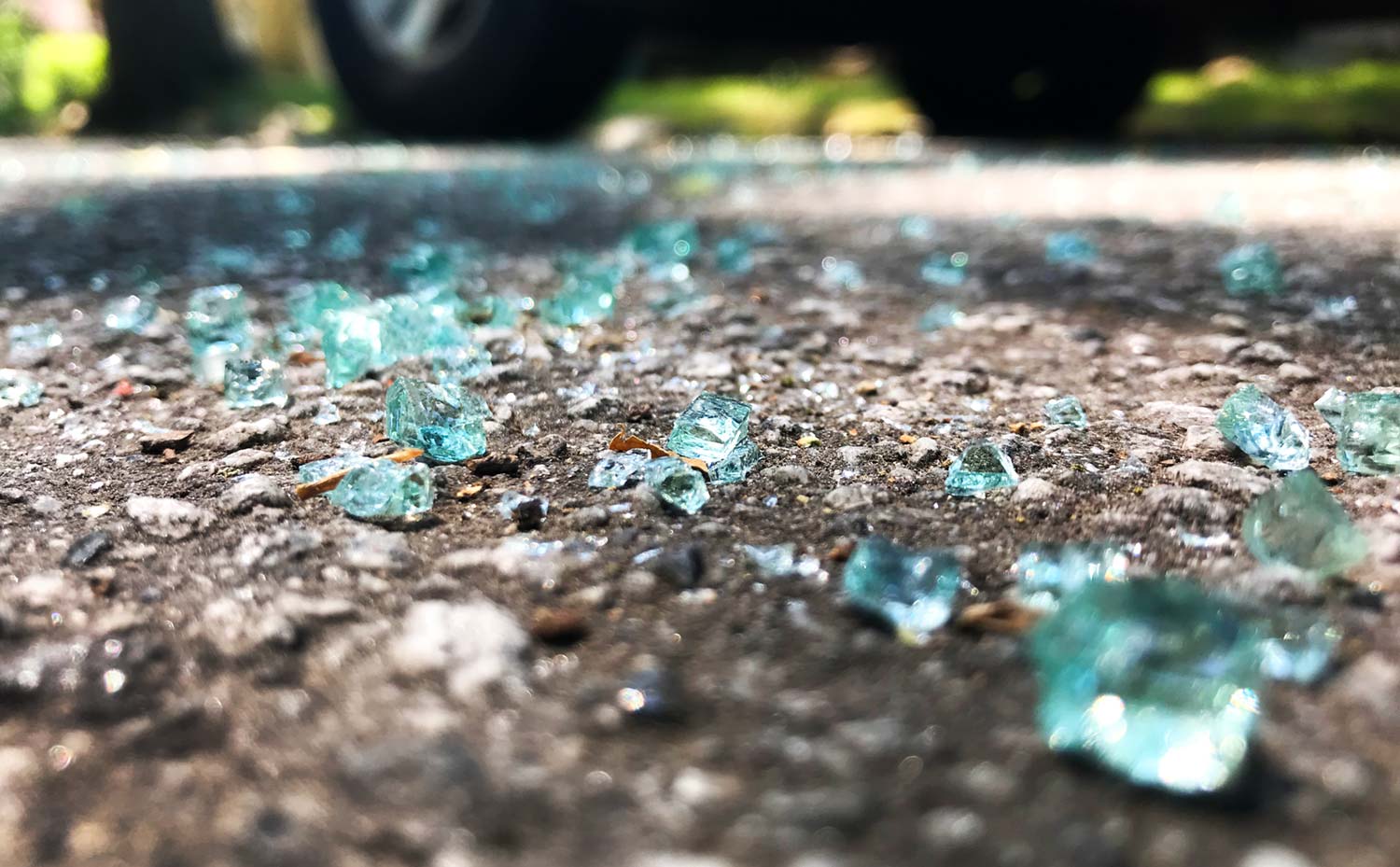
By Louis Cahill
The only thing worse than paying too much for your fly fishing gear is having it stolen.
I woke up this morning to a pile of glass by my truck. One of the worst things about living in a big city is the constant presence of crime. Car break-ins are common and, in the scheme of all the horrible stuff that can happen to you, really just an inconvenience. Don’t waste your time telling me that I need to move to Montana. Believe me, I already know but my wife has the best job of her life and is very happy, so we are here for a while, and while we are, we will have to deal with this kind of thing.
You would think that with the ever-present threat of robbery, I would have better sense than to leave thousands of dollars worth of fly fishing rods and reels, and various photo gear in my truck. You’d be wrong. There were at least a dozen fly rods, half a dozen reels and some photo gear in the truck last night when I, and everyone else on the street, got hit. Hear’s the part you might not expect. It’s all still there.
I leave that stuff in my truck for a reason. It’s the safest place I have, because I have a Truckvault.
Read More »Fly Tying: Working With Wire
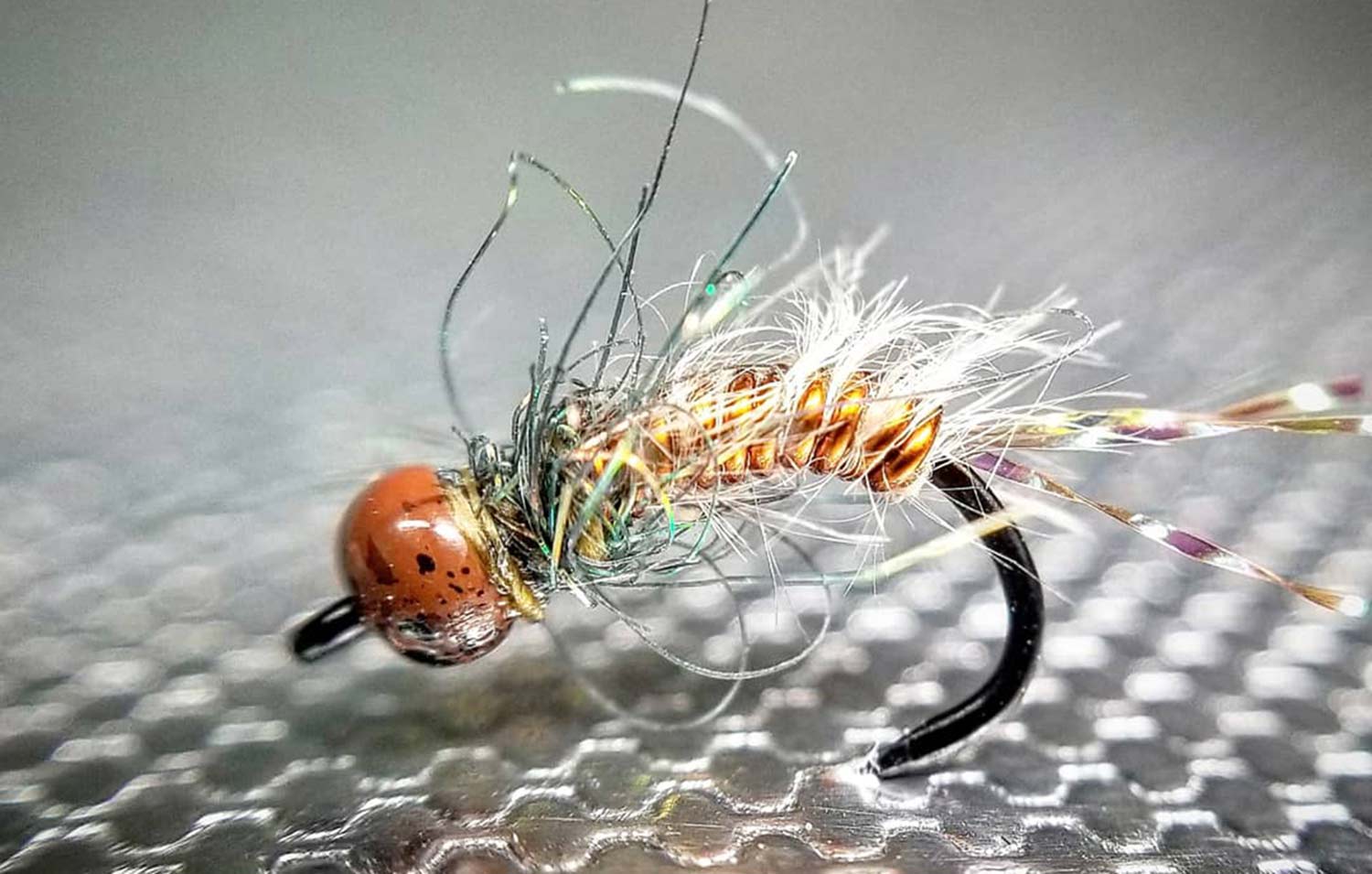
By Bob Reece
Wire is a common ingredient in nymph patterns.
Whether in the form of ribbing or full body segments, this material adds the important elements of segmentation, durability and weight. Yet, because of its fairly rigid nature, it can be a difficult material to work with.
When attaching wire to the hook shank, it’s important that it lands on one of the lateral sides of the hook shank. This means that is should be tied in on the side of the hook either closest to your or the side opposite of that. This ensures that the nymph pattern is widened horizontally and not vertically. This matters because most natural nymphs have horizontally widened bodies. Using this tying method helps to mimic that profile when constructing nymphs.
In addition to the tie in location, the consistency of the thread wraps that are laid down matters for two different reasons. If the wraps are laid down without consistent firm tension, the wire will shift position when the tier wraps it forward. Equally important is the spacing of thread wraps laid down on the surface that the wire will be wrapped over. If the wraps are not evenly spaced and create an uneven surface, that same uneven layout will be reflected in the overlying wire wraps.
Read More »13 Proven Streamer Patterns for Trout
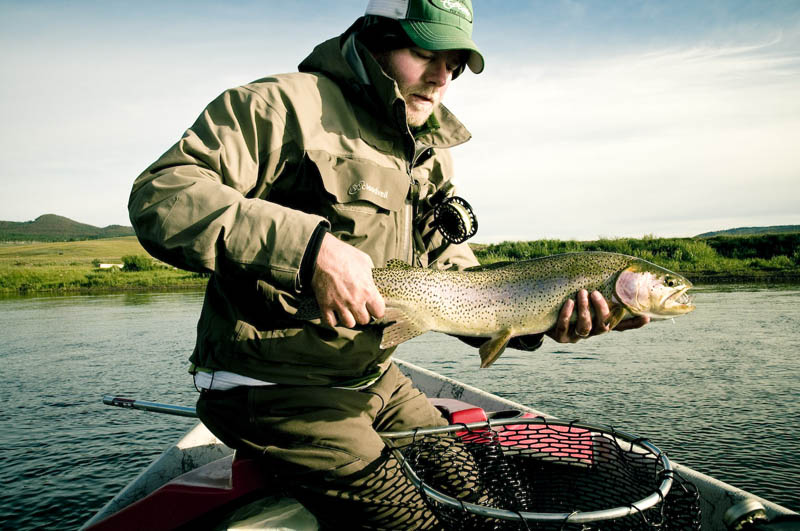
13 Big streamer patterns that get big results!
I wrote an article stressing about the importance of experimenting with different streamer retrieve speeds and stripping lengths, until you find a winning combination that the trout find the most enticing. Generally, when you’re paying close enough attention when your streamer fishing, you’ll notice one type of streamer retrieve that works hands down better than the rest. If you don’t find this to be the case and you’re not catching fish with streamers, it probably isn’t the best tactic for the day you’re fishing. My testimony and theories provided in my previous post were gathered from many years of streamer fishing for trout, but were validated and backed up further from guide trips as recent as this past week. We had several comments on the post, with one of our followers requesting I write a follow up post showcasing some of my favorite streamer patterns. Here you go Matt.
Read More »The Hydropsyche With Peacock Quills
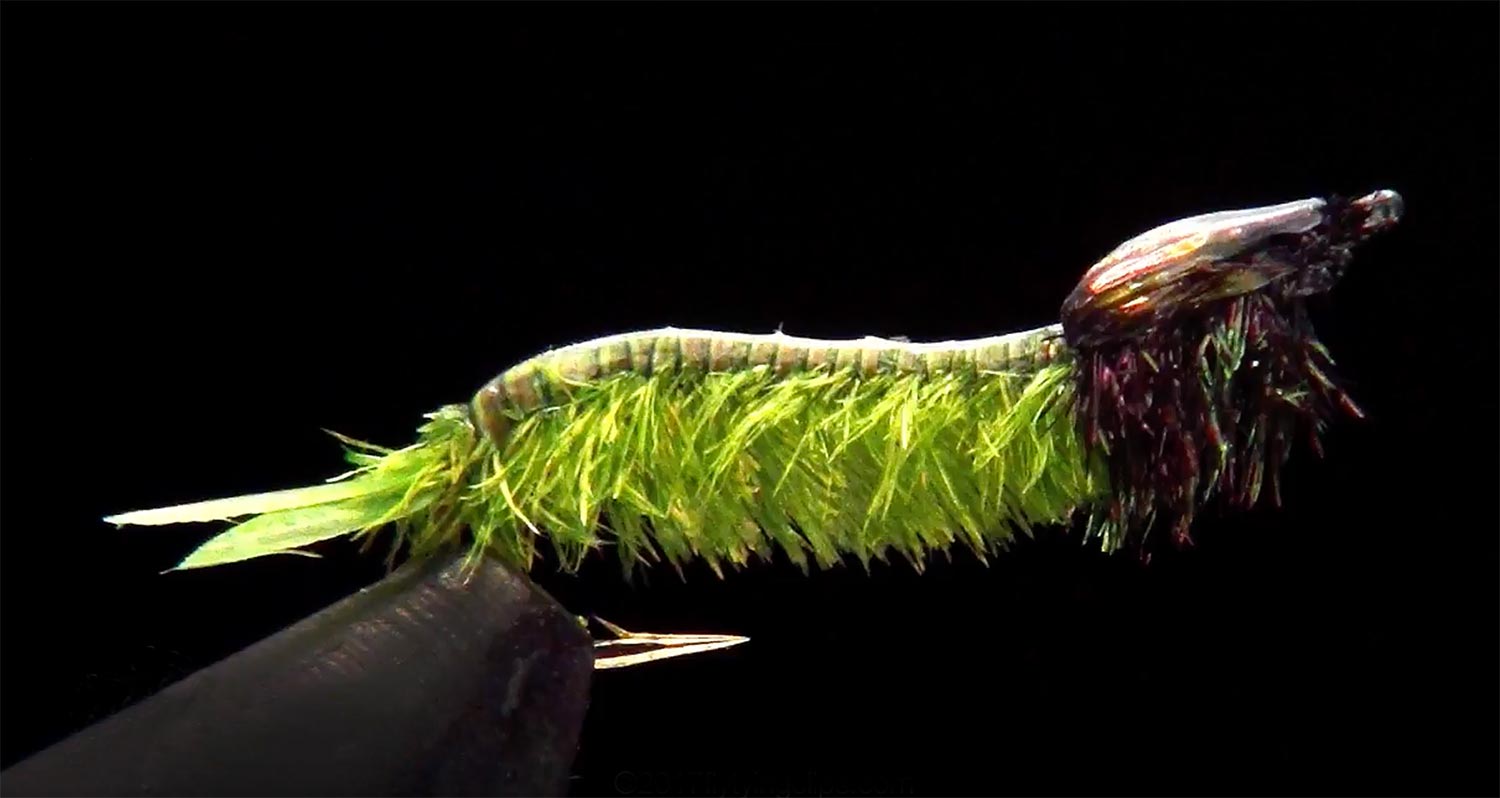
By Herman deGala
Here’s some advanced technique for tying flies with peacock quills.
Fly tying has always been the art of linking a series of techniques to achieve an overall design. Innovative techniques are often a result of problem solving.
I have always enjoyed the look of wrapped peacock quills and the beautiful segmented bodies they create with simple turns. I also enjoy the iridescence of peacock barbules and their fish catching attributes. I have come up with a simple way to combine both of these attributes.
I DEMONSTRATE IT HERE WITH A SIMPLE HYDROPSYCHE. I AM SURE YOU CAN THINK OF MANY MORE APPLICATIONS WITH YOUR OWN TYING.
Read More »Tying On The Road
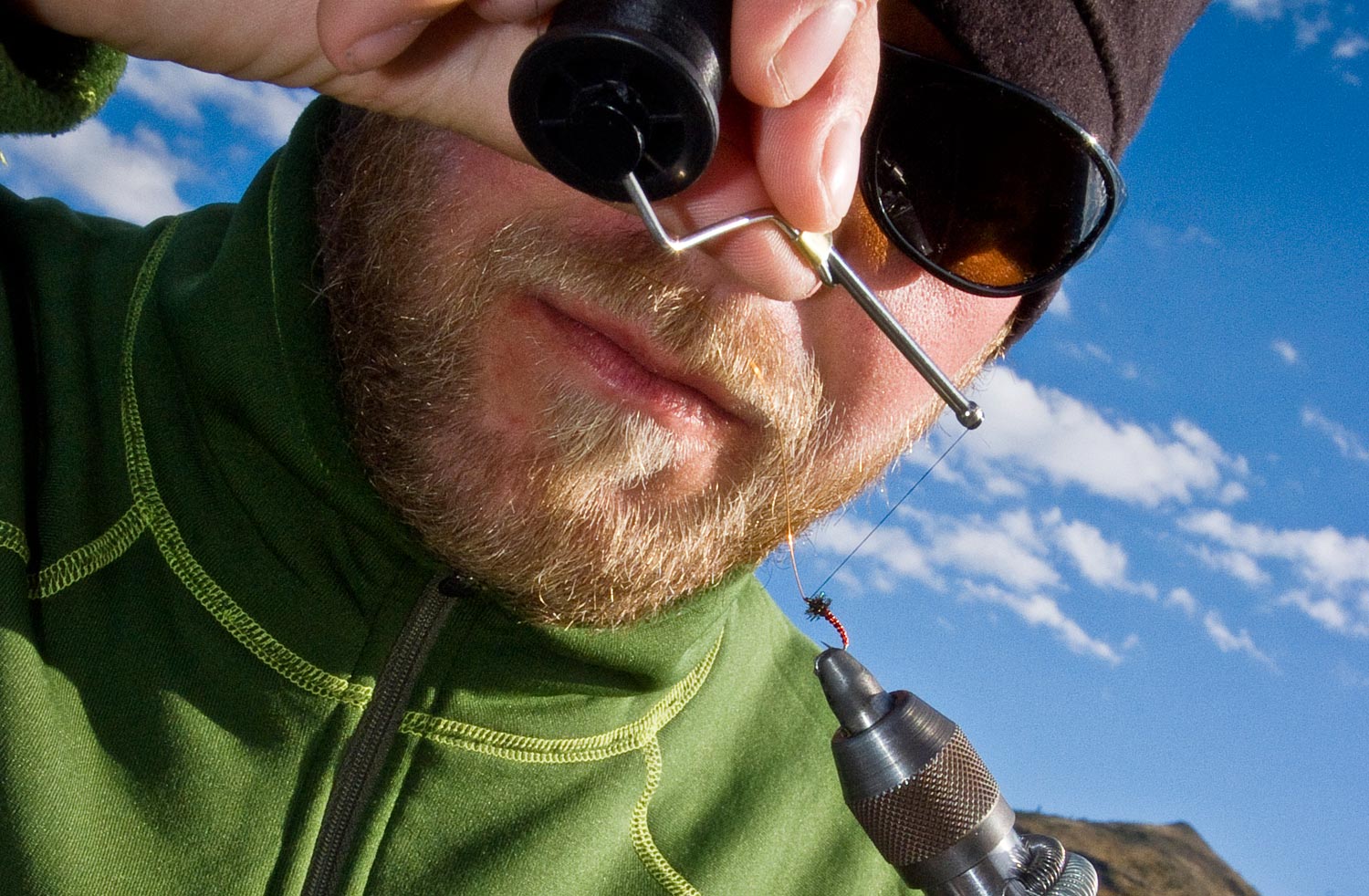
When Kent and I hit the road for a Gink and Gasoline outing, among the pile of rods, waders, cameras and Cliff Bars there’s always a canvas tool bag stuffed to the gills with feathers and fur. It’s generally a ridiculous amount of materials. Way more that we could ever use. Everything we need to tie a thread midge or a streamer that looks like something Elton John wore in the 70s.
I don’t care how well you plan for a trip you always need just one more of that hot fly. Maybe there’s an unexpected hatch or maybe a sudden inspiration. In any case that bag of feathers has saved more than one trip.
I’ll never forget a subfreezing night we spent in a fish camp on the White River in Arkansas tying shad patterns. We would tie a fly, bundle up and scramble out to the river to try it out
Read More »Cool Enough For You?
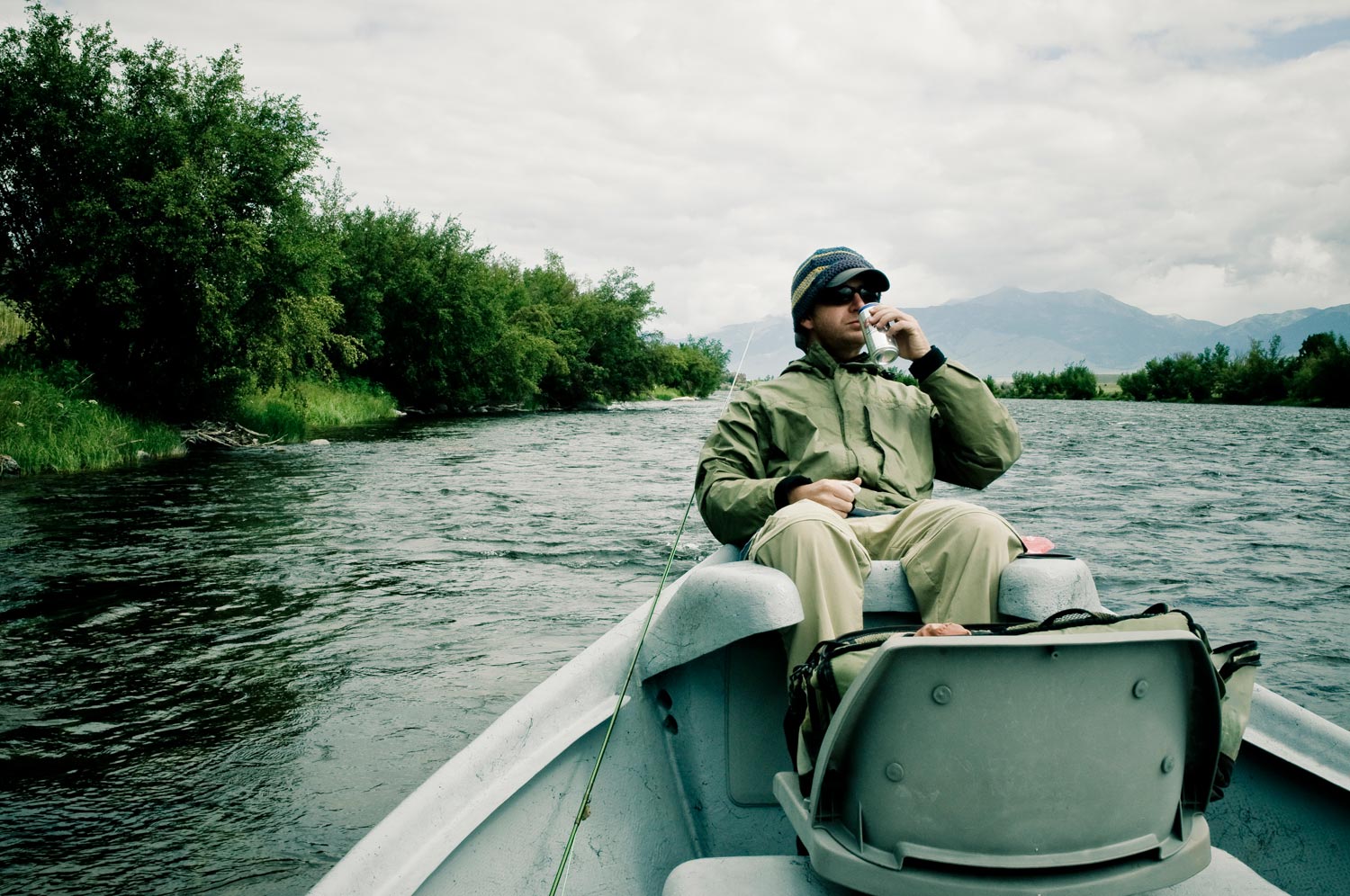
EVERY JOURNEY STARTS WITH A SINGLE CAST.
For some reason, this morning I’m thinking of losing a fish. A big fish and, worst of all, someone else’s fish. That’s the worst kind to lose.
A hundred years ago, when I was still pretty much a Gomer, my wife bought me a guided day of fishing on a private trout stream. That’s a pretty common experience here in Georgia. I’d been catching pretty average trout on my own for some time and, like most novice fly fisherman, I had been sucked into lusting after the monster trout I saw on the covers of fly fishing magazines. In the same way that young girls get the idea that they are supposed to look like Barbie, I was dying to see a photo of myself holding some massive drooling piscivore. This obsession was just as healthy as a case of bulimia and pulling it off seemed just as likely as my looking like Barbie. My darling wife had clearly heard enough about it and sought professional help.
I’d never been guided before and was wholly uncomfortable with the idea. I’ve never been comfortable asking for help and still feel a little guilty about being waited on in restaurants. Having a guide tie my flies on was excruciating. The guide, who’s name has long faded from my memory, was great and I learned a lot from him but I was so nervous about fishing in front of a professional that I was a shit show for most of the morning.
By lunch time I was fishing like I had a brain and, with me more relaxed, my guide able to put me on some nice fish and actually enjoy the afternoon himself. He expressed an interest in my bamboo rods and I insisted he take one and fish with me the rest of the day. I’m sure that made him nervous as hell but I felt a whole lot better. For the minute.
Read More »